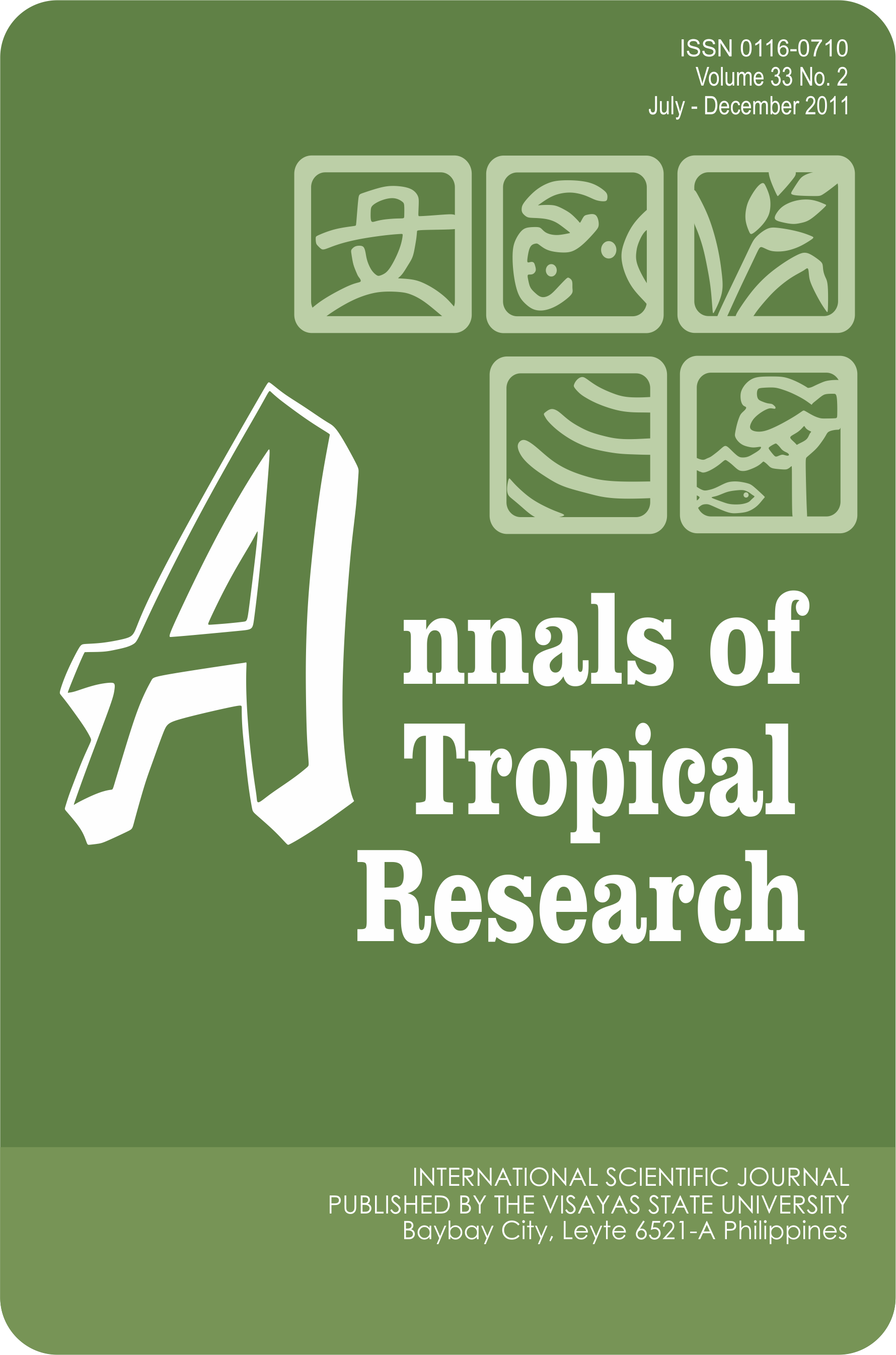Bioassay-guided Identification of the Nematicidal Secondary Metabolites from Paecilomyces lilicanus for the Control of Root-knot Nematode (Meloidogyne graminicola, Golden and Birchfield)
DOI:
https://doi.org/10.32945/atr3322.2011Keywords:
nematicidal, metabolites, nematophagous, Paecilomyces lilicanus, root-knot nematode, Meloidogyne graminicola, culture filtrate, azuleneAbstract
Meloidogyne graminicola larvae immersed for 48 hours in 100% concentration of Paecilomyces lilicanus culture filtrate had 100% larval mortality while only 7.12% and 18.72% mortality was recorded, after 6 and 12 hours immersion, respectively. Toxic metabolites present in the culture filtrate affected the larvae as there were no galls produced in rice seedlings at 100% concentration. The culture filtrate also limited egg hatching as shown by lesser galls produced in rice seedlings roots. The mycelial extract was found more potent compared with the culture filtrate extract; however, both fractions affected the larvae and eggs of M. graminicola.
The dried ethyl acetate fraction gave 88.51% mortality at concentration of 500mg/ml, followed by 76.91% at concentration of 400mg/ml. A lethal concentration (LC) of 50% was attained at 300mg/ml. Sixteen fractions were recovered from the crude dried extract of the fungus using vacuum liquid chromatography (VLC). Bioassay revealed that fraction 3 (combined fractions 5, 6 and 7) gave 39 percent nematode mortality suggesting that the nematoxic compounds are present in these fractions.
The fragmentation pattern in GC-MS revealed that the active fraction contains more than 20 compound with 5 major ones. The structure of the main compound was partially identified as derivative of azulene containing two unsaturation points. The limited amount of the fraction subjected to spectroscopic analysis does not warrant its purification to be able to do other analysis such as NMR spectroscopy for structure elucidation and complete compound identification.
Downloads
Submitted
Published
How to Cite
Issue
Section
License

This work is licensed under a Creative Commons Attribution-NonCommercial-ShareAlike 4.0 International License.











